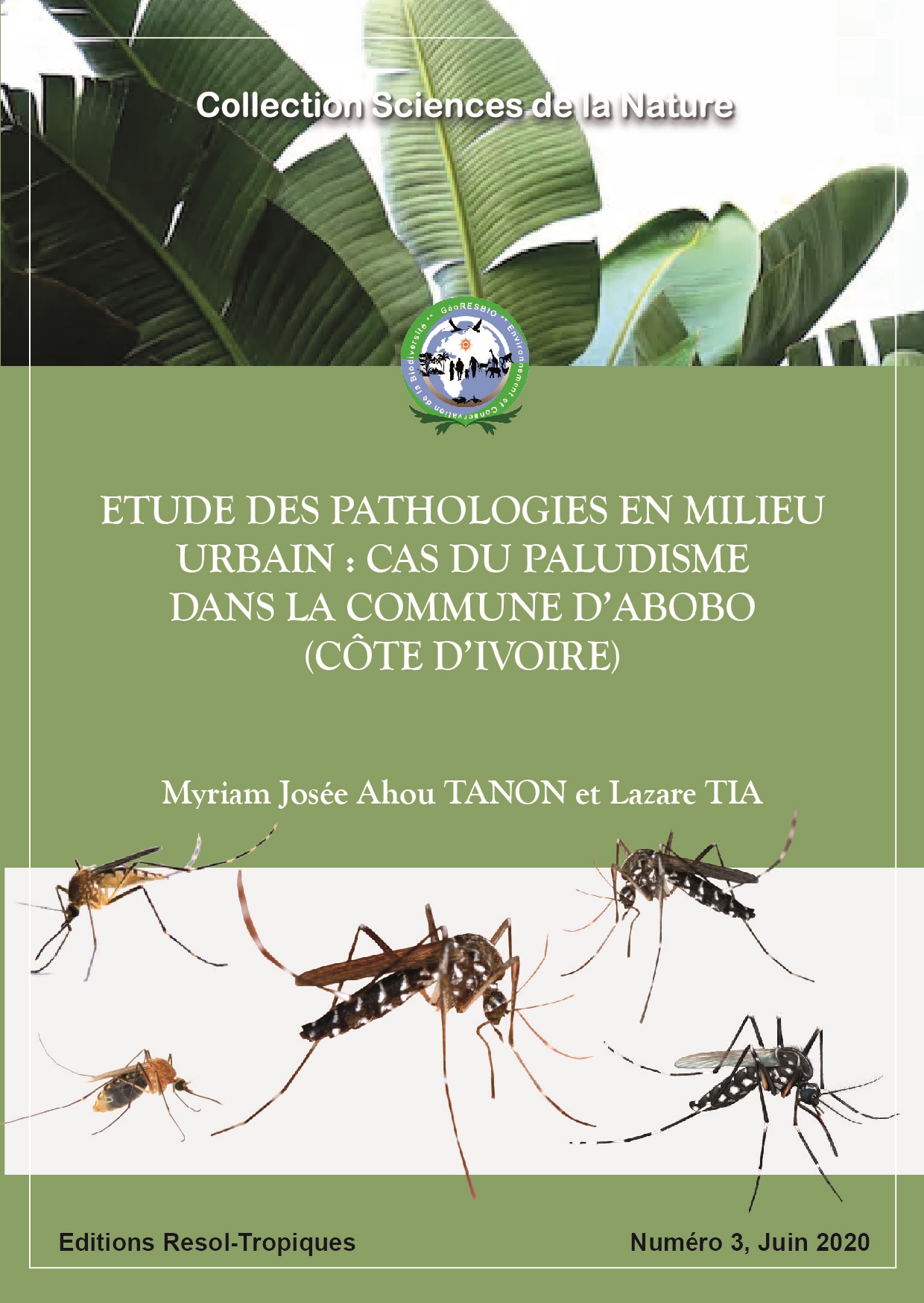Myriam Ahou Josée Tanon, Lazare Tia
Collection Sciences de la Nature, Editions Resol-Tropiques, 2020 - 91 pages
This study aims to analyse the spatial dynamics of malaria in relation to environmental and socio-economic parameters in the commune of Abobo. The methodology is based on documentary research, field observations, GIS data collection, entomological and household surveys, and interviews with relevant authorities. The results of the survey show that environmental conditions, behaviour, lifestyle and the average level of prophylactic knowledge of the population, socio-economic activities, contribute to the development of mosquitoes. According to larval surveys, 21% of the breeding sites are productive; they are of natural (28.6%) and human (71.6%) origin. In addition, breeding lodgings are permanent (6.2%), semi-permanent (39.3%) and temporary (54.2%). They shelter two genera of mosquito larvae, predominantly Aèdes (50.6%) and Culex (49.4%), with an absence of mosquito larvae of the genus Anopheles vector of malaria.
Published: 2020-06-26

